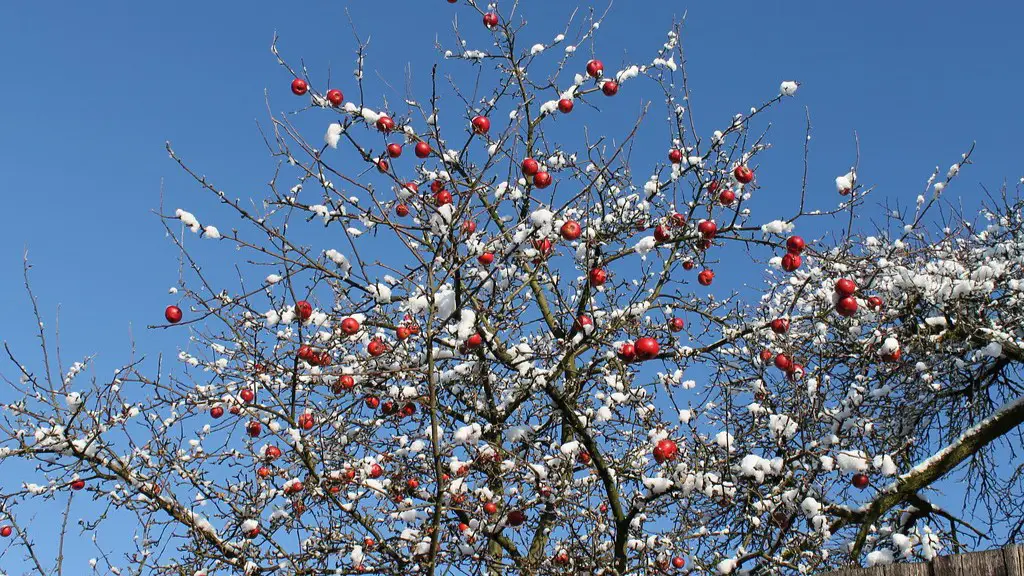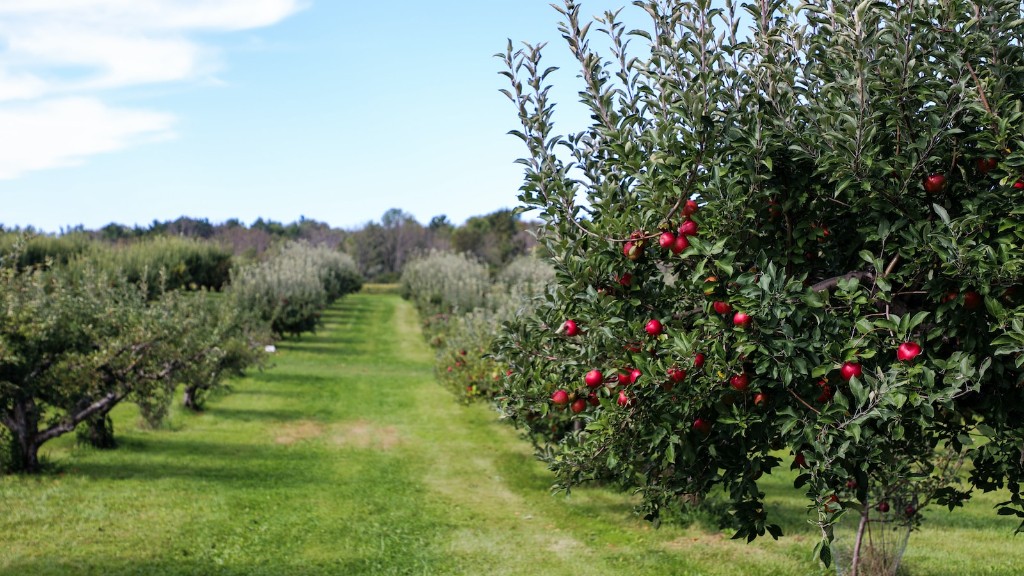Apple trees are some of the most common and beloved fruit-bearing trees in the world. However, many apple tree owners can experience disappointment when their tree fails to produce fruit. There are several potential factors that can cause an apple tree not to fruit, and understanding these can help an orchardist adjust their management practices to ensure a better outcome for their tree.
Low-nutrient soil is one of the most significant causes of apple tree failure to fruit. An apple tree needs access to abundant nitrogen, potassium, and phosphorus in order to flower and set fruit. Without enough of these essential nutrients, a tree won’t be able to create flowers. Gardeners should test their soil’s nutrient levels, and then supplement with fertilizer when necessary.
Apple trees also need plenty of sunlight and adequate water to produce a successful crop. If a tree is planted in a shaded spot it won’t be able to get the proper amount of light, which can hinder flower production. Furthermore, if a tree isn’t watered consistently during its peak fruiting months, it could fail to set fruit.
Pruning is another crucial task in order to encourage flowering and fruiting in an apple tree. An orchardist should prune their tree’s branches at least once a year if they want it to bear fruit. When the branches are pruned, then the tree will flower more abundantly and the flowers will receive more sunlight and be pollinated effectively. This will increase the chances of successful fruiting.
Too much or too little fertilizer can also contribute to apple tree failure to fruit. A tree that is over-fertilized can produce excessive growth or foliage, leading to decreased flower production. Conversely, a tree that isn’t fertilized enough will fail to set fruit due to inadequate nutrient levels.
Last but not least, if the tree has been infected with certain diseases or pests, it may fail to fruit. Common diseases such as apple scab, downy mildew, and fire blight can cause a tree to fail to set fruit. Additionally, insect pests such as aphids, mites, and whiteflies may prevent a tree from flowering or causing blossom damage that affects fruiting.
Soil Testing
In order to effectively address why an apple tree isn’t fruiting, one of the first steps is to conduct a soil test. Soil testing will provide information about macronutrients such as nitrogen, potassium, and phosphorus, as well as micronutrients like calcium and magnesium. Armed with this knowledge, the orchardist can better understand if certain nutrients are limiting their tree’s success. If the soil is lacking in nutrients, it can be supplemented with fertilizer designed specifically for apple trees. By testing and supplementing the soil, the tree will have a better chance of producing fruitful yields.
Proper Pruning
When all the tree’s nutrient needs are taken care of, pruning should be conducted to maximize potential yields. Certain tips should be kept in mind when pruning an apple tree. Trees should be pruned annually in the late winter or early spring. Pruning should remove all dead wood, crossing branches, and any other damaged or diseased wood. Since apple tree blossoms depend on sunlight for pollination, pruning should also open the tree’s canopy to permit light from multiple angles. Pruning should also be done to direct shoots towards one another as this increases flower numbers.
Heaviness of These Fruits
In addition to basic pruning practice, an orchardist should also be aware of the heaviness of these fruits. As the apples hang from the tree and mature, they can put stress on branches and cause them to fail without warning. An orchardist should take the weight of apples into account when pruning a tree. Just as a pruning can open a tree’s canopy allowing more sunlight, it can also help reduce the amount of apples that burden a branch.
Pest and Disease Control
Pests and diseases are another big factor that can prevent an apple tree from flowering and bearing fruit. Common diseases include apple scab, downy mildew, and fire blight, all of which should be treated with fungicides at the first sign of infection. Pests such as aphids, mites, and whiteflies may also detract from a tree’s flowering success. Insecticides and horticultural oils can be used to manage these pests and reduce their population.
Temperature Control
Temperature control is another important factor in fruit production. Apple trees require cold winter temperatures in order to break dormancy and develop flowers. Depending on the tree’s location and climate, it may not get enough cold exposure, thus hampering its blooming potential. If this is the case, orchardists may want to consider adding protection methods such as a protective wrap or tall poles to provide shade when temperatures exceed limits.
Regular Water and Patience
Finally, an orchardist should never underestimate the power of regular water and simply being patient. While apple trees grow quickly and fruit early in the season, sometimes it can take as much as four years for a tree to begin flowering. During this period, the tree needs to be regularly watered to keep its soil moist, as dry conditions can hamper flower development. Once these basics are established, an orchardist can sit back and patiently wait while their tree develops into a bountiful producer.

